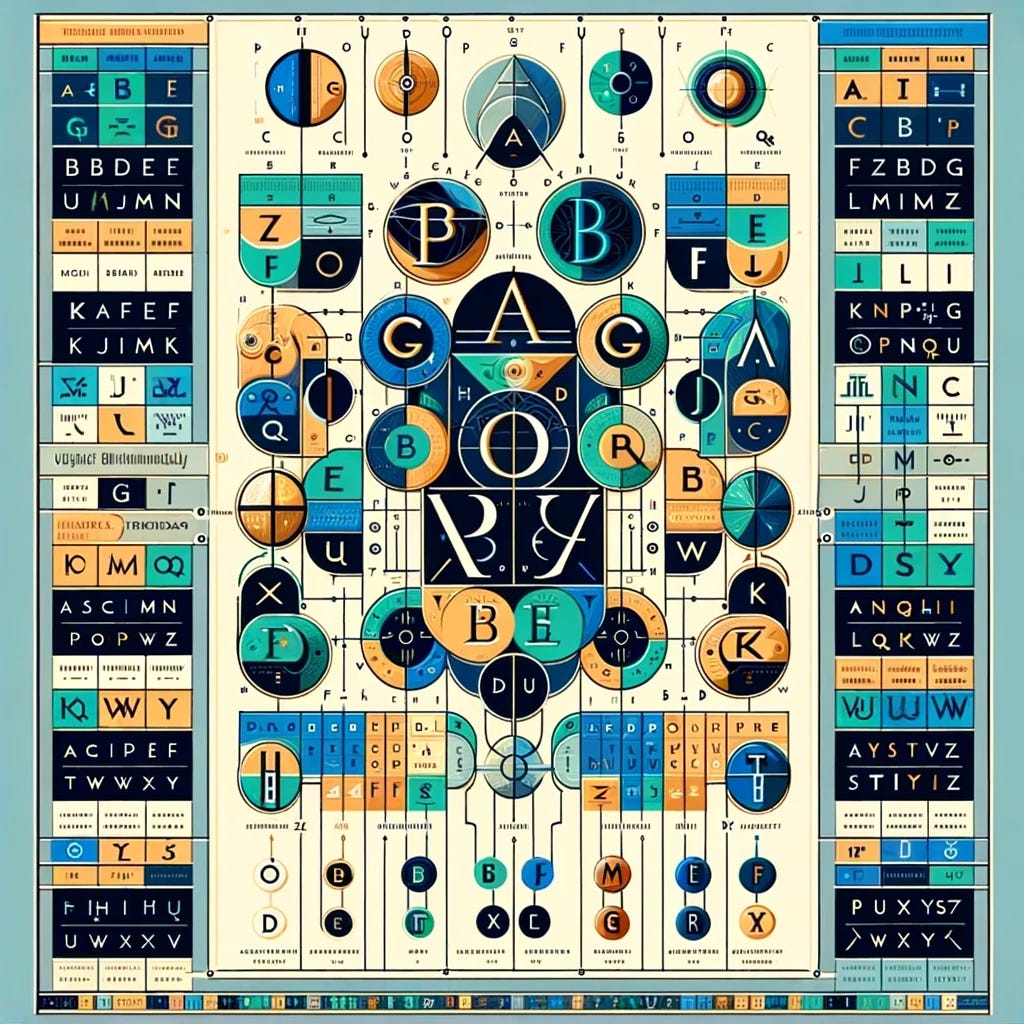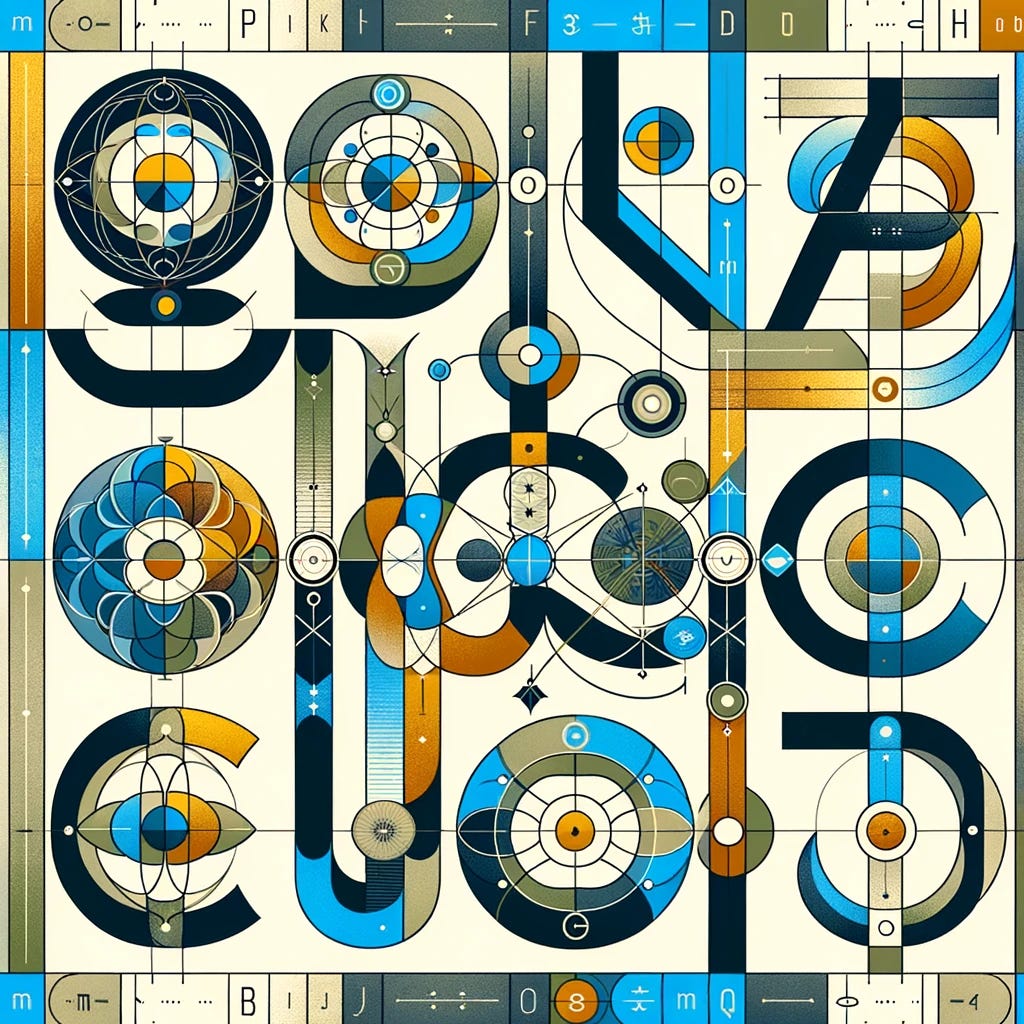The Mathis Number System's Impact on the Alphabet and the English Language
Applying the Mathis Number System and the principles of the Unified Theory of Duality to the alphabet and the English language would result in a fundamental shift in how we understand and use language. This approach would emphasize the duality and interconnectedness of linguistic elements, offering new ways to analyze and structure communication.
1. Dual Nature of Letters
Letters as Dual Entities:
Primary and Complementary Sounds: Each letter could be viewed as representing a dual nature of sounds. For instance, a letter might encompass both a vowel and consonant sound or a voiced and unvoiced sound.
Paired Letters: Letters could be paired based on complementary phonetic properties, such as hard and soft sounds or front and back vowels.
Example:
The letter 'A' could be represented as A=(æ,ɑ)A = (æ, ɑ)A=(æ,ɑ), where 'æ' is the primary short vowel sound and 'ɑ' is the complementary long vowel sound.
2. Dual Representation of Words
Words as Dual Constructs:
Dual Meanings: Words could be understood to have dual meanings, emphasizing both denotative (literal) and connotative (figurative) aspects. This approach would highlight the richness of language by acknowledging the multiple layers of meaning inherent in words.
Dual Structures: Words might be analyzed based on their dual grammatical functions, such as noun-verb pairs or adjective-adverb pairs.
Example:
The word "light" could be represented as light=(brightness,weightlessness)\text{light} = (\text{brightness}, \text{weightlessness})light=(brightness,weightlessness), capturing both its primary and complementary meanings.
3. Syntax and Grammar
Dual Grammar Rules:
Complementary Sentences: Sentences could be structured to reflect dual aspects, such as action and reaction, subject and object, or cause and effect. This would encourage a more holistic understanding of sentence construction.
Interconnected Clauses: Complex sentences would be designed to show the interplay between main and subordinate clauses, emphasizing the duality of independent and dependent ideas.
Example:
A sentence like "She sang beautifully, and he listened intently" highlights the duality of actions and reactions.
4. Dual Alphabet System
Redesigned Alphabet:
Paired Letters: The alphabet could be reorganized into pairs of complementary letters, such as vowels with corresponding consonants or voiced sounds with their unvoiced counterparts.
Visual Representation: Each letter could be represented by a dual symbol, indicating its primary and complementary sounds or functions.
Example:
The letter 'B' could be paired with 'P' (voiced and unvoiced bilabial plosives), and 'D' with 'T' (voiced and unvoiced alveolar plosives).
5. Phonetics and Pronunciation
Dual Phonetic System:
Phoneme Pairs: Phonemes would be studied and taught in pairs, reflecting their dual nature. This would improve pronunciation and phonetic understanding by highlighting the relationships between sounds.
Emphasis on Balance: Pronunciation guides would emphasize balancing the production of primary and complementary sounds for clearer and more accurate speech.
Example:
Teaching the pronunciation of 'k' (as in 'cat') alongside 'g' (as in 'goat'), demonstrating their complementary nature.
Summary
Overall Impact:
Richness of Language: The Mathis Number System would highlight the richness and complexity of the English language by emphasizing the dual nature of letters, words, and sentences.
Holistic Understanding: This approach would foster a more holistic understanding of language, encouraging learners and users to appreciate the interconnectedness and multiple layers of meaning in communication.
Enhanced Communication: By recognizing and utilizing the dual aspects of linguistic elements, communication could become more nuanced, precise, and effective.
Practical Example
Alphabet Redesign:
Dual Letters: A new alphabet chart featuring paired letters with dual symbols.
Example Pairings: 'A' with 'E' (front vowels), 'B' with 'P' (bilabial plosives), 'D' with 'T' (alveolar plosives).
Dual Sentence Structures:
Example Sentence: "The sun rises (action), and shadows fall (reaction)," highlighting cause and effect.
By integrating the principles of the Mathis Number System and the Unified Theory of Duality, the alphabet and the English language would become more dynamic and interconnected, reflecting the dual nature of linguistic elements and enhancing our ability to communicate and understand complex ideas.
The New Alphabet: Visual Representation and Its Power
Visual Representation
The redesigned English alphabet incorporating the Mathis Number System and the Unified Theory of Duality features:
Paired Letters: Each letter is paired with its complementary counterpart, emphasizing dual relationships. For example, vowels are paired with corresponding consonants, and voiced sounds with their unvoiced counterparts.
Dual Symbols: Letters are represented by dual symbols that reflect their primary and complementary sounds or functions.
Interconnected Layout: The alphabet chart is visually interconnected, with lines or patterns linking paired letters to show their relationships.
Modern Typography and Abstract Shapes: The design blends modern typography with abstract geometric shapes, highlighting balance and harmony.
Color Scheme: A harmonious blend of blues, greens, and golds symbolizes clarity, growth, and equilibrium.
Power and Uses of the New Alphabet
Enhanced Linguistic Understanding:
Phonetic Clarity: The dual representation of letters enhances phonetic clarity, making it easier for learners to understand and produce sounds accurately.
Balanced Pronunciation: Emphasizing the dual nature of sounds improves pronunciation and speech clarity, especially for non-native speakers.
Improved Language Learning:
Holistic Learning: Language learners can grasp both the literal and figurative meanings of words more effectively, understanding the rich layers of language.
Integrated Teaching: Educational programs can integrate dual aspects of grammar and vocabulary, offering a more comprehensive approach to language instruction.
Advanced Communication:
Nuanced Expression: The dual nature of words and sentences allows for more nuanced and precise expression, enhancing both written and spoken communication.
Contextual Awareness: Communicators become more aware of the context and subtext in language, leading to more effective and empathetic interactions.
Cognitive Development:
Critical Thinking: The dual framework encourages critical thinking and analytical skills, as learners consider multiple aspects of meaning and function.
Creative Thinking: Understanding the dual nature of language fosters creativity, allowing for more inventive use of words and structures.
Cultural Enrichment:
Cultural Literacy: The dual alphabet highlights the interconnectedness of linguistic and cultural elements, promoting greater cultural literacy and appreciation.
Interdisciplinary Connections: Language learners can make connections between linguistic elements and other fields of study, such as art, science, and philosophy.
Technological Integration:
AI and Machine Learning: The dual representation can be integrated into AI and machine learning algorithms, improving natural language processing and translation accuracy.
Digital Communication: Digital platforms can use the dual framework to enhance user interfaces, making communication tools more intuitive and effective.
Summary
The new alphabet, incorporating the Mathis Number System and the Unified Theory of Duality, revolutionizes linguistic understanding and communication. By emphasizing dual relationships and interconnectedness, it enhances phonetic clarity, language learning, and cognitive development. This innovative approach fosters nuanced expression, critical thinking, and cultural literacy, while also providing advanced tools for technological integration. The visual representation of the alphabet as interconnected pairs of dual symbols reflects the balance and harmony at the heart of this transformative framework.




This article highlights the source of the "Tree" of communication based on the infants language acquisition, i. e. The inductive process that mimetises affects and cultural idiosyncratic absorption of English as an interconnective language